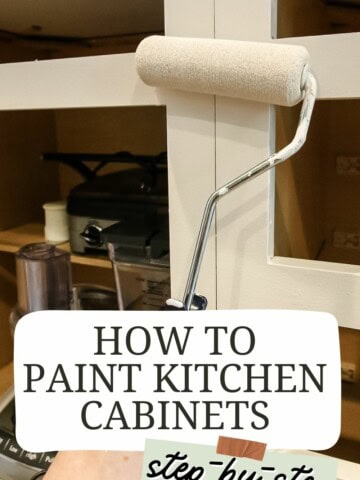Whether your place needs just a little spruce or an entire makeover, you should never underestimate the power of a fresh coat of paint to completely transform a space!
Painting is one of my favorite ways to revitalize a room. It’s an affordable project that most homeowners can do by themselves with few special tools or skills needed to do a great job.
As easy as it sounds, you’ll need a bit of patience to ensure that your paint job stands the test of time. Rushing to move your art or things too soon can lead to smudges and scratches on your newly painted walls—yikes!
So, before you grab your roller and begin your first coat, how long should paint dry before putting furniture back? That’s what we’ll discuss here!
How long should paint dry before putting furniture back?
Generally, it takes 2–4 hours for latex paint to be dry enough for you to move furniture back into a room. Acrylic paint takes around the same time, but for oil-based paint, you’ll have to wait 6–8 hours to ensure that you don’t stain the furniture or smudge the paint.
For the best results, let it sit overnight. Try to avoid placing furniture or decor up against the wall for 24–48 hours. If your chairs or cabinets typically touch the wall, pull them out for a few inches.
I’ve read guides saying that you need to wait up to 3 weeks after painting a room to move your furniture back in. This is completely unrealistic and unnecessary.
I prefer leaving our painted walls to dry for 2 hours before putting our things back in place. At this point, the paint should be dry to the touch. Note that it will NOT be fully cured yet!
That’s because latex and acrylic paint are dry to the touch in just one hour but take a couple of weeks to fully cure. On the other hand, oil paint takes 8 hours to dry but cures in just one week.
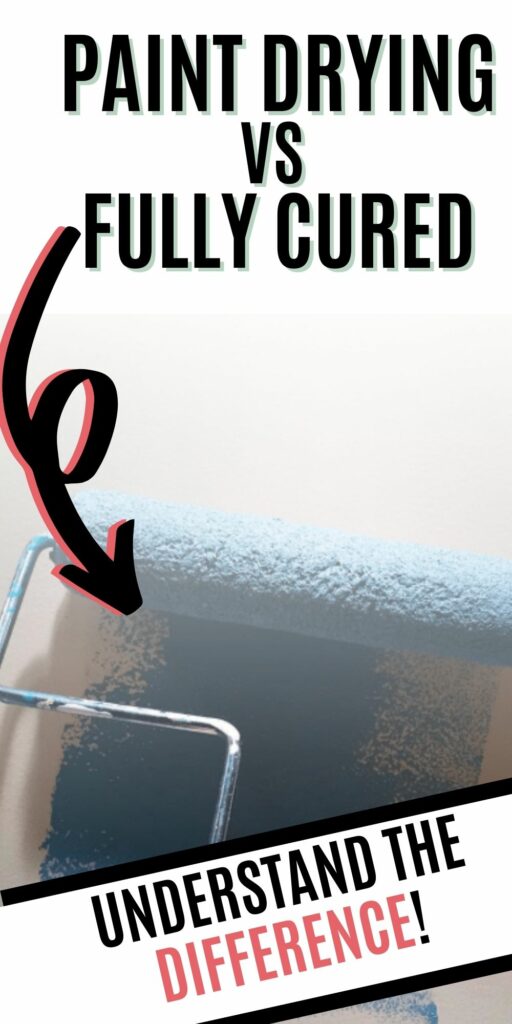
Difference between drying and curing paint
When it comes to painting, there are different degrees of dryness to be familiar with.
Typically, paint being dry means that it’s “dry to the touch.” When you touch the top surface of the paint, it won’t feel sticky or stain your fingers.
However, the layers of paint underneath may still be wet, especially if you did multiple coats.
Your paint is fully cured when it’s completely hard and dry all of the way through. This means that all of the water or solvents in the paint have fully evaporated.
Paint that is dry but not cured can get dings and dents in it more easily than fully cured and scratch-resistant painted walls or furniture.
To test if your paint is cured, gently press your fingernail into a discrete spot. If it leaves a dent, it’s not yet cured. No dent means it has been cured!
Factors that affect drying time
There’s no exact time frame for paint to fully dry and cure. Several factors can affect the speed at which paint dries, including:
- Type of paint
- Temperature in the space
- Humidity levels
- Number of coats/layers of paint
- Ventilation or airflow
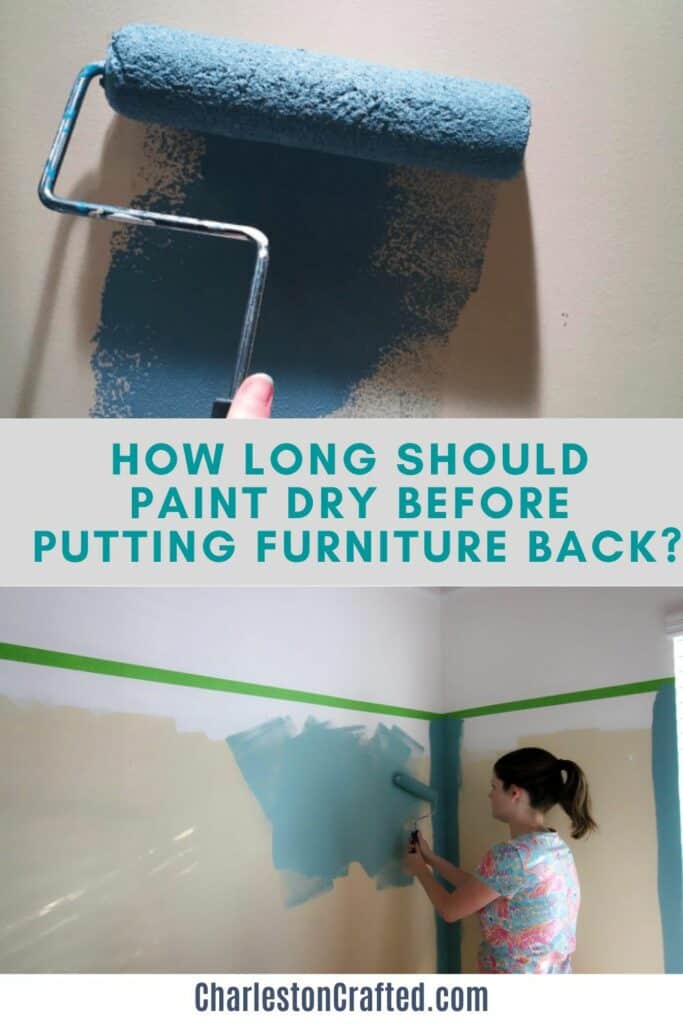
How long to wait between coats of paint
The drying time for your first coat of paint should be 30 to 90 minutes, but you should wait 2 to 4 hours before applying the second coat. This applies to both latex and acrylic paint.
But what about oil-based paint? Well, it can take 4 hours for this type of paint to feel dry, but you’ll need to wait for 8 hours to apply your second coat.
If you’re wondering why water-based paints dry faster, that’s because they’re thinner than oil and easily evaporated by airflow.
Thicker and glossier paints take longer to dry, while matte paint dries faster.
Your painting surface also affects the drying time for each coat. Paint dries much faster on wood rather than on steel or concrete because wood is more porous and absorbent.
To stay on the safe side, it’s best to read the manufacturer’s instructions for the type of paint you’re using and follow their recommended wait times for applying each coat.
How long does it take to paint a room?
It can take around 4 to 8 hours to paint an average-sized room, depending on the painter's skill, the type of paint, and the number of coats.
If your room has high ceilings, poor airflow, awkward angles, or a hot and humid temperature, you can expect a much longer time to paint and dry—it can take as long as two days.
How you paint each coat can also affect how long it takes to finish an entire room. A paint sprayer requires the least amount of time to paint and applies thin layers that dry faster.
Paint rollers are great for smooth walls but take more time to paint, resulting in thicker coats. Paintbrushes are light and easy to dip into your paint but also tend to create thick coats.
How long should paint dry before hanging things on the walls?
It’s best to wait at least one week before hanging photo frames, paintings, and other items in a newly painted room.
Although it may feel like an eternity to do so, this will help prevent items from adding an unnecessary layer of pressure that can damage the paint.
Decorating too soon can also cause damp areas and prevent the paint from drying completely.
Note that interior paint typically cures in 3 weeks. So, if you’re very worried about dings and dents and want to be extra safe, don’t hang anything on the walls before then.
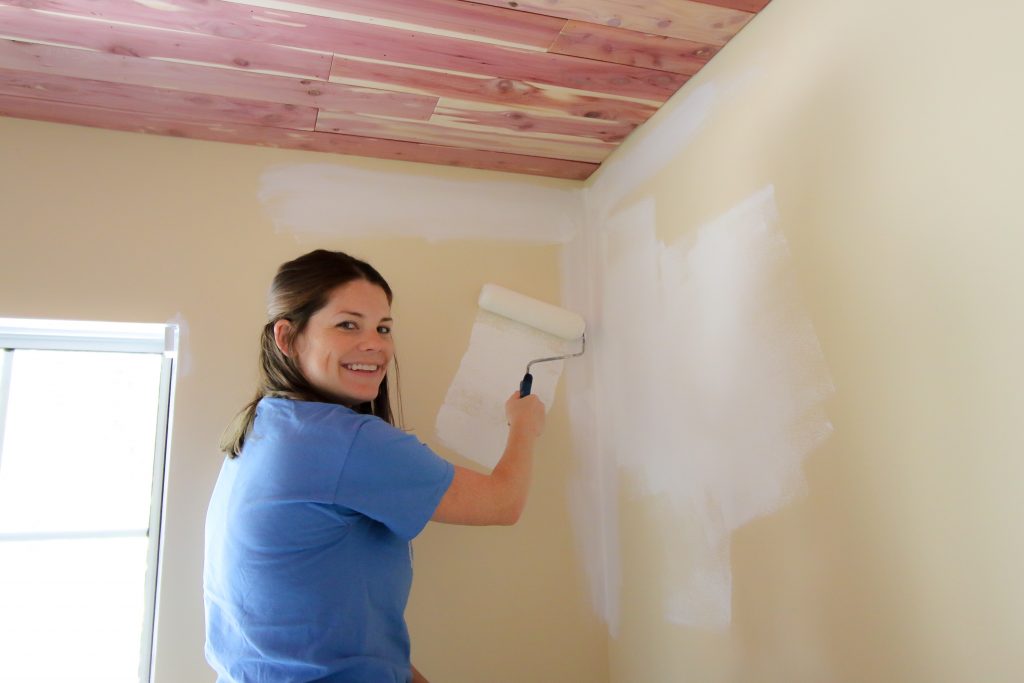
How long should paint dry before putting the outlet covers back on?
Wait for at least 24 hours to put electric outlet covers back on, or you run the risk of them sticking to the paint and potentially peeling it when the covers are removed in the future.
The same goes for other small furnishings, like light switches, towel bars, and door knobs. Personally, I put everything back up after 24 hours and have never had an issue.
Remember that any resulting bumps and lumps are likely to be minor, and if your walls have any texture, they might not be noticeable!
However, the glossier your paint, the more the imperfections will show. That’s one reason I love eggshell paint—it helps to hide small smudges and scratches.
If you have small kids, I suggest covering the outlets and wires with painter’s tape to prevent the kids from being tempted to mess with them for 24 hours. And, of course, watch them well!
How long should paint dry in the bathroom before showering?
Steam from a hot shower can cause new and uncured paint to streak and run down the bathroom wall. The longer you wait for the paint to dry fully, the better!
I’d try to wait for at least 48 hours before taking a hot shower and creating steam in a newly painted bathroom, especially if you painted a dark color over a lighter, older coat of paint.
One good tip is to leave the bathroom door, window, and fan open for some time to allow maximum airflow and to clear out any remaining dampness.
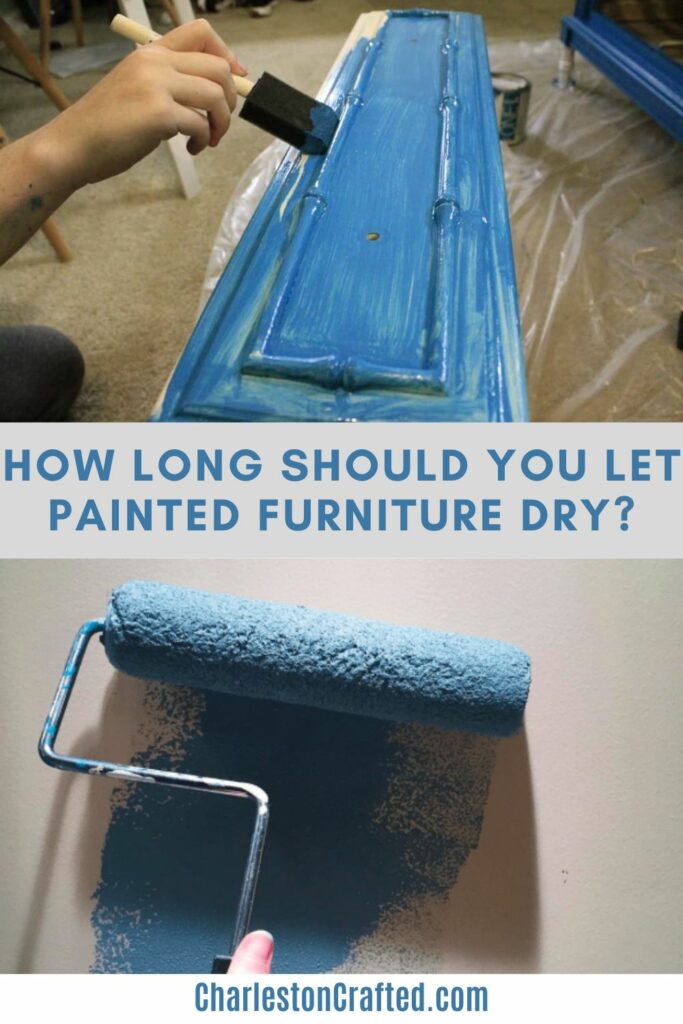
How long should you let painted furniture dry?
You need to be a little more conservative about drying times when painting furniture.
Chairs, tables, shelves, and cabinets typically get more wear and tear on a daily basis compared to walls.
Painted furniture is usually “dry to the touch” in 24 hours. If you want to move it to a new location, you can gently hold it—I’d aim for something like the underside.
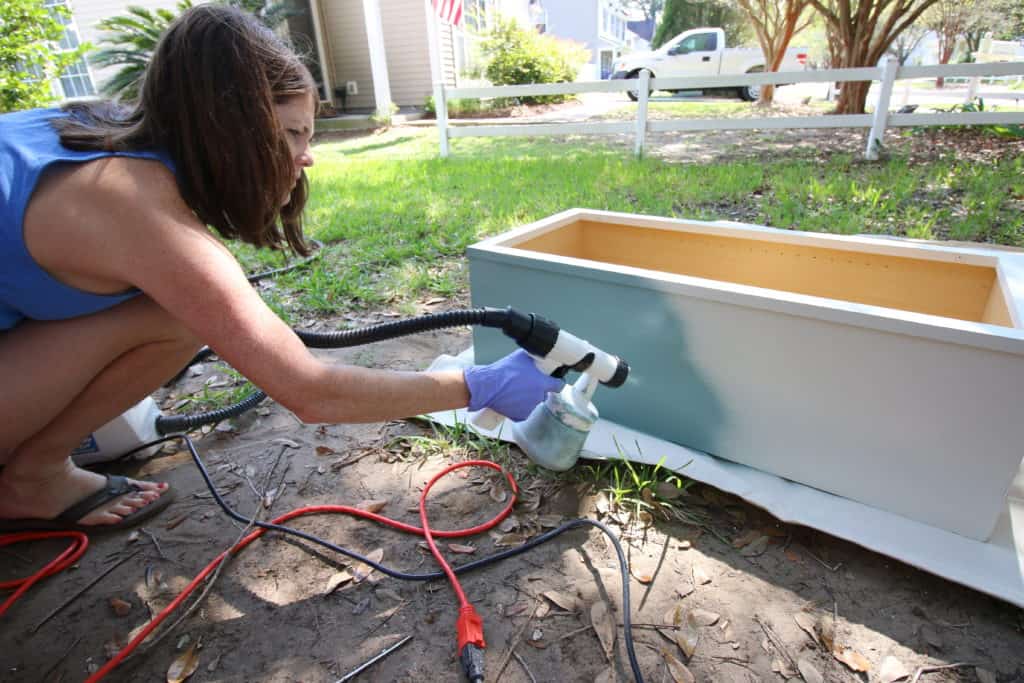
How long should painted furniture dry before setting things on it?
I prefer to wait a whole week before setting anything on painted furniture. This is because weighted objects can leave small marks and dents on uncured paint.
Furniture typically has a smooth finish, which makes dings and dents more evident to the eye.
If you use a glossy finish, you’ll want to wait a bit longer before displaying your items because the gloss will attract attention to any imperfections in the paintwork. Take note of the drying time indicated on the paint can.
Final Thoughts
One of the secrets to a perfectly painted wall is giving it enough time to dry before decorating.
Make sure to wait a couple of hours before hanging your art and bringing your furniture back in—and follow the no-touch rule for at least a full day to avoid damaging your wall and furniture!
Do you have more questions about how long you should let paint dry? Connect with us and share your thoughts with our community of DIY home improvement enthusiasts!
Any more questions about how long you should let paint dry?!
Looking for something?
We've been doing this since 2012 so we have a LOT of blog posts!
Search stuff like: Ceiling Projects | DIY Plant Stands | Thrift Flips


Hello, I'm Morgan, half of the creative force behind CharlestonCrafted.com! With a passion for DIY that dates back to 2012, I've transformed three homes and now I'm dedicated to helping others craft their dream spaces. Let's turn your house into a home together!


